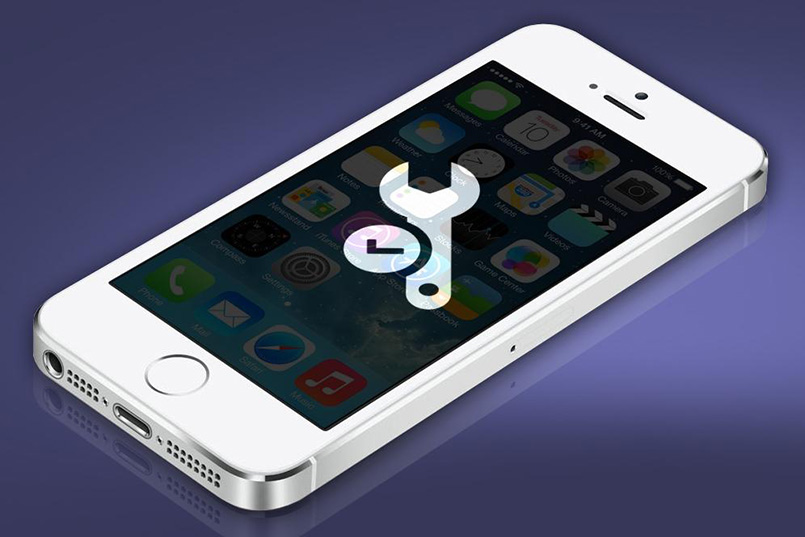Doing a fresh install of Android and the Samsung Experience is something that can help fix a lot of issues. I do recommend that you backup your data ahead of time but then you can then follow these steps to perform a soft data reset and a hard data reset on the Samsung Galaxy Note 9.
I’ve been using complex operating systems for years and doing a fresh install is something that can be very helpful from time to time. Microsoft Windows is a perfect example of this because you usually end up installing and uninstalling programs, copying and deleting files, and sometimes just messing with things that you shouldn’t be messing with. Android and the Galaxy Note 9 is virtually identical in this way as we use our phones more and more we see random issues begin to happen.
Why Reset the Data on the Galaxy Note 9?
I spoke a little bit about this in my tutorial that I covered which showed you how to boot the Galaxy Note 9 into Safe Mode. The entire goal of these troubleshooting steps is to resolve an issue that we have begun to notice. This can be anything from stopping applications or games from force closing to preventing the smartphone from overheating, and your average poor battery life issues that wasn’t happening when you first purchased the smartphone.
So, if you have tried the Safe Mode troubleshooting step and you continue to notice the same issues, then you may need to perform a factory data reset on the phone. I know that a lot of people hate doing this but if you create a backup of the Galaxy Note 9 ahead of time then you shouldn’t have to worry about losing any of your data. I recommend the Samsung Smart Switch method for this type of backup, but a mixture of all three mentioned in that guide should be helpful.
Once you have your backup created, then you can follow these steps detailed below to do a factory data reset. Now, this tutorial will be broken down into two different sections as there are two different data resets that you can choose to do. One is commonly referred to as the Soft Factory Data Reset and the other is known as the Hard Factory Data Reset. Let me emphasize that both of these methods do the same type of reset and neither are better than the other.
I recommend doing the Soft Factory Data Reset if you can boot into Android, but if your Galaxy Note 9 is stuck in a Bootloop then that method is out of your hands. If that is the case, then you’ll have to boot into Recovery Mode and perform the Hard Factory Data Reset. The video below shows you how to perform both versions. In case you’re wanting to follow along, I start off by showing you how to do the easier method first.

How to Perform a Soft Galaxy Note 9 Factory Data Reset
- Open up the Settings application
- Remove accounts from the Cloud & Accounts section (optional)
- Scroll down and tap on the General Management menu
- Tap the Reset option
- Tap on the Factory Data Reset choice
- Scroll down and tap on the Reset button
- Then tap on the Delete All button
- And wait for your Galaxy Note 9 to reboot after it wipes all of your data
As I mentioned, if you can boot into Android and feel that you need to reset the data on your phone, then this is the method you should go with. Just like with Windows, there are times when Android can get bogged down with regular use. Whether that’s installing and uninstalling apps and games, storing a lot of photos and/or videos, or many other things. These operating systems are complex and a fresh install of the software can do some good if it isn’t performing like it used to.
If you are selling the phone or getting rid of it, then remember to remove all of your connected accounts (specifically the Google account) from the Galaxy Note 9 before doing the factory data reset. This a security layer of protection for those who have just have their smartphone stolen. So just be aware. If you’re just doing this for your own benefit though, then you can skip Step 2 in the guide above and dive into the General Management section of the Settings application.
From here, tap on the Reset menu and then choose the Factory Data Reset option. This is where you’ll see a lot of information reminding you about all of the data you are erasing by performing this soft reset on the Galaxy Note 9. As long as you know what you’re doing and you’re okay with this, scroll down and tap on the Reset button in blue and then you’ll be taken to yet another reminder screen about what will happen if you proceed. As long as you have a reset backup created with Samsung Smart Switch then you should be good to go.
So this last part has a Delete All button in all capital letters because once this is tapped the smartphone will reboot. If you’re ready, tap the blue button and your Galaxy Note 9 should begin to shut down. Once it has been completely powered off then you will see it go through the soft reset process. The Galaxy Note 9 soft reset process itself doesn’t take much time at all (less than a minute), but the first boot cycle back into Android after it is done will take 2-4 minutes to complete.

How to Perform a Hard Galaxy Note 9 Factory Data Reset
- Power down the smartphone
- Boot the Galaxy Note 9 into Recovery Mode
- Press the Volume Down button until the Wipe Data / Factory Reset option
- Press the Power button to select this option
- You’ll be asked to confirm
- So press the Volume Down button to highlight the Yes option
- Press the Power button to select it and wait for the Hard Reset to complete
- Once completed, the Reboot System Now menu should be automatically highlighted
- That way you just need to press the Power button to select it and boot back into Android
Doing a Hard Reset on the Galaxy Note 9 is in the second half of the video embedded above. I only recommend doing this if you have put yourself in a Bootloop and you cannot get into the Android operating system. If that’s the case you’re in, then you need to get the smartphone to a completely powered down state. This can be done by pressing and holding the Power button, but this sometimes triggers a simple reboot. So you may need to let the Bootloop continue until your battery is completely dead.
You can also follow the tutorial linked in Step 2 of the guide above and just make sure that the proper buttons are held down right when the Galaxy Note 9 goes into yet another reboot. Once you have gotten the phone into Recovery Mode though, the rest of the guide is rather simple. The thing is, the touch screen does not work when you have booted into the stock Android Recovery Mode. If you’re in TWRP or something then it’s a different story and this step by step guide won’t help you anyway.

So, to navigate through this menu we need to press the Volume Up or Volume Down button to control which menu option is highlighted. Naturally, we want to press the Volume Down button multiple times until the Wipe Data / Factory Reset option is highlighted. From here, just go ahead and press the Power button to select it. Similarly to the first guide, Samsung wants to make sure you’re aware that your data will be wiped clean during this process so you will be greeted with a confirmation menu.
Just like before, press the Volume Down button until the Yes option is highlighted (assuming you are sure positive you’re ready). You can still back out now by choosing the No option and booting back into Android. However, you’re likely here because you can’t get into Android so make sure the Yes option is highlighted and press the Power button to begin the process. Just like before, the Galaxy Note 9 Hard Reset only takes a few sections (look at the bottom of the screen to see its progress).
Once it has completed, you’ll be taken back to the stock Android Recovery Mode and the Reboot System Now option should be highlighted by default. So press the Power button to select it when you’re ready and the Galaxy Note 9 will reboot. Assuming everything has gone well, in 2-4 minutes you will be booted right into the standard Android and Samsung Experience activation screen where you’ll be asked to connect to the internet and sign into your accounts.







